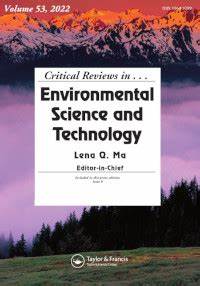机器学习在微生物修复中的应用与挑战:现状与未来方向综述
IF 13.2
1区 环境科学与生态学
Q1 ENVIRONMENTAL SCIENCES
Critical Reviews in Environmental Science and Technology
Pub Date : 2025-09-14
DOI:10.1080/10643389.2025.2560435
引用次数: 0
摘要
微生物修复是环境污染治理的重要手段。然而,由于微生物群落与外部压力之间复杂而动态的相互作用,有针对性的干预具有挑战性。机器学习(ML)可以通过数据挖掘来深入分析微生物过程与污染物去除之间的联系。微生物修复位于微生物学和环境科学的交叉点,其多样化的范围为ML应用提供了高度的灵活性。尽管ML具有潜力,但对其在这一特定领域的应用的关注有限,并且缺乏结构化的综述来指导ML框架在微生物修复中的发展。本文综述了ML在微生物修复中的作用和现状。从初始监控、策略制定到系统设计,以清晰的层次结构介绍和比较应用模式。它提供了利用现有框架和替代解决方案来应对相关挑战的途径。在看似不同的方法中,确定了两种主要的应用模式:基于映射的推理和基于重要性的关键代理识别。第一种模式在两个因果关联的数据集之间建立映射,以预测各种结果,如补救效果和微生物生长。因此,第二种模式确定了作为关键微生物或环境变量的预测因子,这些预测因子对绘制精度有重要贡献。讨论了与有限的可访问性和可解释性相关的新问题。最后,提出了在管道开发中使用多模态学习和应用知识图(KGs)和深度强化学习框架来增强可解释性的解决方案。本文章由计算机程序翻译,如有差异,请以英文原文为准。
Application and challenges of machine learning in microbial remediation: A review of current status and future directions
Microbial remediation is crucial in environmental pollution control. However, targeted intervention is challenging due to the complex and dynamic interactions between microbial communities and external stressors. Machine learning (ML) can be used to deeply analyze the connections between microbial processes and contaminant removal through data mining. Microbial remediation lies at the intersection of microbiology and environmental science, with its diverse scope offering high flexibility for ML applications. Despite the potential of ML, limited attention has been given to its applications within this specific field, and there is a lack of structured reviews to guide the development of ML frameworks in microbial remediation. This review examines the role and current status of ML in microbial remediation. Application modes are presented and compared with a clear hierarchy, including initial monitoring, strategy formulation, and system design. It provides access to established frameworks and alternative solutions to address relevant challenges. Two primary application modes are identified among the seemingly diverse approaches: mapping-based inference and importance-based identification of key agents. The first mode establishes a mapping between two causally linked datasets to predict various outcomes such as remedial effects and microbial growth. Accordingly, the second mode identifies predictors that significantly contribute to mapping accuracies as key microbes or environmental variables. Emerging issues related to the limited accessibility and interpretability are discussed. Finally, using multi-modal learning for pipeline development and applying knowledge graphs (KGs) and a deep reinforcement learning framework to enhance interpretability are proposed as promising solutions.
求助全文
通过发布文献求助,成功后即可免费获取论文全文。
去求助
来源期刊
CiteScore
27.30
自引率
1.60%
发文量
64
审稿时长
2 months
期刊介绍:
Two of the most pressing global challenges of our era involve understanding and addressing the multitude of environmental problems we face. In order to tackle them effectively, it is essential to devise logical strategies and methods for their control. Critical Reviews in Environmental Science and Technology serves as a valuable international platform for the comprehensive assessment of current knowledge across a wide range of environmental science topics.
Environmental science is a field that encompasses the intricate and fluid interactions between various scientific disciplines. These include earth and agricultural sciences, chemistry, biology, medicine, and engineering. Furthermore, new disciplines such as environmental toxicology and risk assessment have emerged in response to the increasing complexity of environmental challenges.
The purpose of Critical Reviews in Environmental Science and Technology is to provide a space for critical analysis and evaluation of existing knowledge in environmental science. By doing so, it encourages the advancement of our understanding and the development of effective solutions. This journal plays a crucial role in fostering international cooperation and collaboration in addressing the pressing environmental issues of our time.

 求助内容:
求助内容: 应助结果提醒方式:
应助结果提醒方式:


